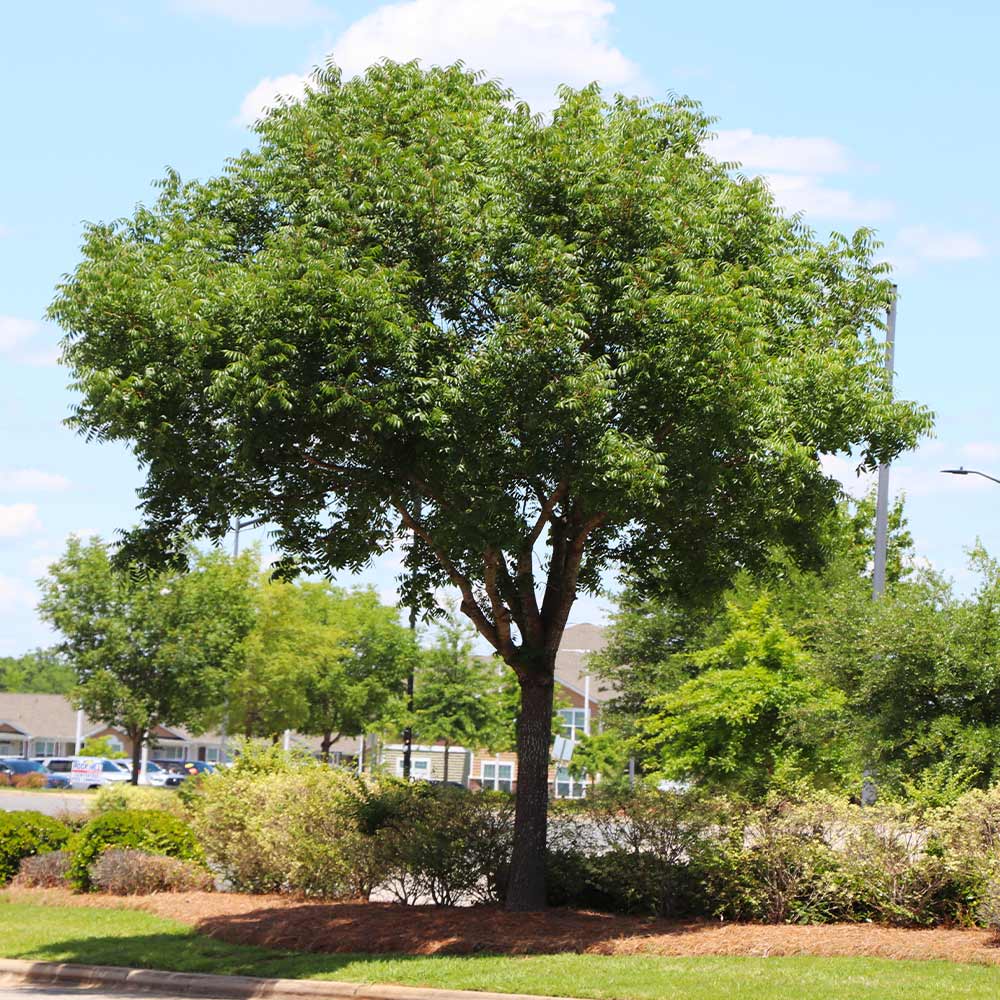Chinese Pistache Tree For Sale Near Me – In some cases, sellers may be willing to offer financing options, where they agree to receive payment over time, which can make the business more attractive to potential buyers. The very notion that everything can be bought and sold creates a society where inequality is not just accepted, but ingrained in the very structure of the economy. With just a few clicks, consumers can browse through thousands of listings for second-hand items from all over the world. Millennials and Gen Z, in particular, have embraced the idea of second-hand shopping as a way to challenge consumerism, reduce waste, and express their individuality. For sellers, online platforms can expand their reach to a global audience of potential buyers, increasing the chances of finding the right match for their business. The durability and longevity of these products mean they don’t need to be replaced as frequently, reducing the need for constant purchases and ultimately saving money in the process. In conclusion, the sale of a business is a complex process that involves numerous steps, from identifying the right buyer or seller to completing due diligence and negotiating the terms of the transaction. Sellers also have to deal with the emotional aspects of letting go of a business that they may have built over many years. When a person decides to sell something, they might weigh the pros and cons, debating whether it’s the right time or whether it’s really necessary to part with what they’ve had for so long. But even as we wrestle with the implications of living in a world where everything is for sale, we also see that this reality is not entirely negative. Workers are often paid meager wages for their labor, while corporations amass wealth. Many buyers are drawn to industries where they already have experience, while others may seek a business in an entirely new field in order to diversify their portfolio. The resale of pre-owned clothing has become a booming industry in recent years, with second-hand stores and online marketplaces thriving as more consumers opt for affordable, sustainable alternatives to fast fashion. In the age of immediacy, it can often feel as though many goods are made with built-in obsolescence, created to be replaced every few years. This shift from a linear economy, where products are made, used, and disposed of, to a circular one, where products are continually reused and repurposed, is a step towards a more sustainable and environmentally friendly world. It carries with it a deep sense of commodification — the idea that every part of our lives, every piece of our history, every corner of our existence, has a price attached to it. Both buyers and sellers should approach transactions with honesty and transparency to ensure a smooth exchange. For sellers, the challenge lies in pricing items fairly and accurately representing their condition. For buyers, the process typically starts with identifying a business that aligns with their interests, skills, and goals. The desire for more, the constant pursuit of bigger profits and greater influence, can lead to exploitation.

Chinese Pistache Trees for Sale
Fast shippingshop best sellersexplore amazon devicesread ratings & reviews Up to 70% offfind the best productsshop now

Chinese Pistache Trees for Sale
Fast shippingshop best sellersexplore amazon devicesread ratings & reviews Up to 70% offfind the best productsshop now

Chinese Pistache Trees for Sale
Up to 70% offfind the best productsshop now Fast shippingshop best sellersexplore amazon devicesread ratings & reviews

Chinese Pistache Trees for Sale
Up to 70% offfind the best productsshop now Fast shippingshop best sellersexplore amazon devicesread ratings & reviews

Chinese Pistache (Pistacia Chinensis) LAWNS Tree Farm
Fast shippingshop best sellersexplore amazon devicesread ratings & reviews Up to 70% offfind the best productsshop now

Chinese Pistache Tree for Sale Buying & Growing Guide
Fast shippingshop best sellersexplore amazon devicesread ratings & reviews Up to 70% offfind the best productsshop now

Chinese Pistache Trees For Sale Online The Tree Center
Up to 70% offfind the best productsshop now Fast shippingshop best sellersexplore amazon devicesread ratings & reviews

Chinese Pistache For Sale Texas Tree Farms
Fast shippingshop best sellersexplore amazon devicesread ratings & reviews Up to 70% offfind the best productsshop now

Chinese Pistache Tree for Sale
Fast shippingshop best sellersexplore amazon devicesread ratings & reviews Up to 70% offfind the best productsshop now

Chinese Pistache For Sale Texas Tree Farms
Up to 70% offfind the best productsshop now Fast shippingshop best sellersexplore amazon devicesread ratings & reviews
The very notion that everything can be bought and sold creates a society where inequality is not just accepted, but ingrained in the very structure of the economy. People place their belongings for sale for many reasons. Whether it’s the sleek lines of a designer chair or the intricate patterns on a handwoven rug, quality goods are often as much about aesthetics as they are about functionality. There is also a growing trend of upcycling and repurposing second-hand goods, where items that may no longer serve their original purpose are transformed into something new and useful. Beyond practical reasons, the appeal of quality goods for sale also lies in the sense of pride and satisfaction that comes from owning something well-made. For the buyer, a car offers freedom, mobility, and a chance to create their own story on the road. In a world where everything is for sale, it’s easy for the vulnerable and the marginalized to be taken advantage of. Our emotional lives, our personal narratives, and even our deepest fears have been monetized. This connection between consumers and the creators of quality goods is something that’s been fostered for centuries. This pride comes not just from the product itself, but from knowing that you are supporting a tradition of craftsmanship and care. The most obvious benefit is the cost savings. In conclusion, quality goods for sale represent the best that craftsmanship, design, and functionality have to offer. Self-help books and motivational speakers promise to sell us the tools to fix ourselves, to buy into a better version of who we could be. From designer labels to quirky, eclectic finds, second-hand clothing offers a wealth of variety and style at a fraction of the price of new items. In this sense, purchasing pre-owned items can be seen as a form of social responsibility, as it helps create a positive impact that extends beyond the individual buyer. When people buy second-hand items, they are extending the life cycle of those goods, which means fewer products end up in the trash. For many, owning a quality product means owning a piece of history, a connection to something larger than themselves. For the buyer, there is the risk of inheriting a business with hidden problems or liabilities that were not disclosed during the due diligence process. It’s a phrase that, at first glance, may seem simple and straightforward. Whether it’s a handmade leather bag, a vintage watch, or a luxury car, the term “quality” brings with it an expectation — an assurance that the item in question has been crafted with care, attention to detail, and materials that can stand the test of time.
Acquiring an established business can provide a head start in terms of customer relationships, operational systems, and brand recognition. By choosing second-hand goods, consumers can help reduce waste, conserve resources, and lessen the demand for new production. The “for sale” sign becomes a marker in time, a decision that has been made, signaling that it’s time to move on. When someone buys a second-hand item, whether it’s a piece of furniture passed down through generations or a retro jacket from a bygone era, they are not just acquiring an object; they are connecting to a story, a memory, or a cultural moment. The internet, for example, has created a space where anyone can buy or sell almost anything, from physical products to intangible services. In some cases, selling second-hand items can be a way to make a significant profit, especially if the items are rare, vintage, or in high demand. A well-made frying pan or a durable pair of boots might not have the cachet of a designer handbag, but their value lies in their functionality and reliability. It’s a small but significant way to make a positive impact on the planet, especially when one considers the volume of waste generated by fast fashion, electronic waste, and disposable goods. For the seller, the goal is often to maximize the value of the business, while for the buyer, the focus is on ensuring that the investment is sound and that the business can continue to thrive under new ownership. When people buy second-hand items, they are extending the life cycle of those goods, which means fewer products end up in the trash. These items are often crafted with a sense of purpose, where every stitch, joint, and component is carefully considered to create a product that not only functions well but looks beautiful in the process. They also often help with legal and financial aspects, ensuring that the transaction is completed smoothly and efficiently. Additionally, brick-and-mortar thrift stores and consignment shops provide a more traditional avenue for selling second-hand goods. In times of financial hardship, such as during recessions or periods of high unemployment, more people may turn to second-hand goods as a way to save money. Quality products often come with warranties and customer service support, offering peace of mind to consumers who are investing in something that will serve them well over time. The advent of these online platforms means that consumers can hunt for items they might have otherwise overlooked or been unaware of, sometimes at a fraction of the original cost. Their inherent value comes not only from their physical characteristics but also from the values of durability and sustainability. Quality goods transcend trends and fleeting fads. In some cases, buyers may also acquire businesses with existing intellectual property, such as patents, trademarks, or proprietary technologies, which can offer a competitive edge in the market. Online platforms also offer the convenience of searching for specific items, whether it’s a rare collector’s item, a particular brand of clothing, or a piece of furniture that fits a specific design style.